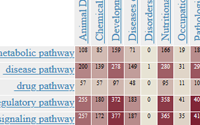Strain
Query Form
There are two options to view the RGD strain records: Option 1. Search
by keyword or Option 2. By direct selection from a list of strains in RGD:
|
|
|
 |
 |
 |
 |
RGD is funded by grant HL64541 from the National Heart, Lung, and Blood Institute on behalf of the NIH.














